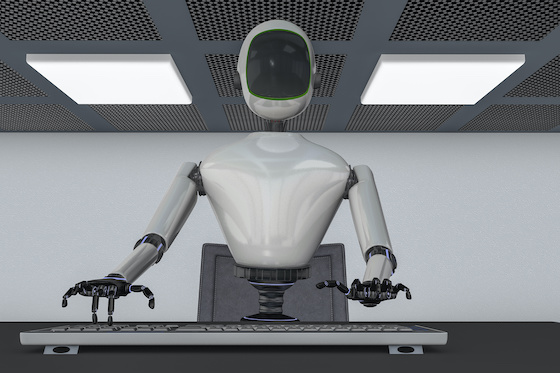
Automation may threaten human jobs, but it might actually threaten women more than men.
This is not an obvious truth. After, all, women are only 15% of machine operators, according to a McKinsey study. As manufacturing moves from large numbers of human workers to fewer machine operators on the way to “lights out” facilities, won’t it be machine operators whose jobs are cut?
And as machine operators are replaced by robots, won’t it be men whose jobs disappear?
Actually, no. 15% of machine operators are women — and 70% of clerical workers. Currently employed machine operators can retrain and step up their skills to take on more highly skilled jobs as… machine operators. They may need to increase their tech skills or step up their math and science knowledge, but they don’t have to change fields entirely.
Robot secretaries?
Clerical workers won’t be replaced by robot secretaries. Instead, their tasks will increasingly be automated by software that doesn’t even need robot arms. Fewer human workers will be needed to cover those tasks, and those who lose the jobs will be less able to retrain for the jobs that continue to need human workers.
In fact, the loss of clerical jobs could even keep women from moving ahead. Women who move into management jobs in manufacturing may take that step from a clerical job rather than a technical job. As clerical jobs disappear, the administrative jobs they feed into may be less available to women.
Does it matter?
Women make up less than 30% of all workers in manufacturing. Does it matter if their opportunities in the field disappear in the future?
Yes. For one thing, manufacturing pays female workers better than other jobs. Median earnings for women in manufacturing were $35,158 per year. The average for all industries was just $30,348 — significantly less. Male manufacturing workers earned much more on average: $48,849. This probably reflects the fact that women in manufacturing are more likely to be in clerical jobs. But manufacturing is still a more promising avenue for women than more female-dominated industries.
Manufacturing continues to suffer from a skills gap. While American women are currently less likely to take STEM degrees than men, changing that could be a solution to the entire skills gap problem. If manufacturing can put out a welcome mat for women and show that it’s an industry in which women can succeed, young women might change their career trajectory.
Those decisions won’t be up to the robots. They will be up to leaders in manufacturing, and to women who appreciate the higher wages and better prospects manufacturing offers them.
